Massage in Chinese Medicine
Massage in Chinese medicine has a long history. In ancient times, therapeutic massage activity was already practiced in China. When people were injured and experienced pain during work, they instinctively massaged the painful area with their hands, which relieved or eliminated the pain.
After long practices, the ancients recognized the effects of massage and turned it into a conscious medical activity, which subsequently gradually developed as a massage discipline in Chinese medicine.
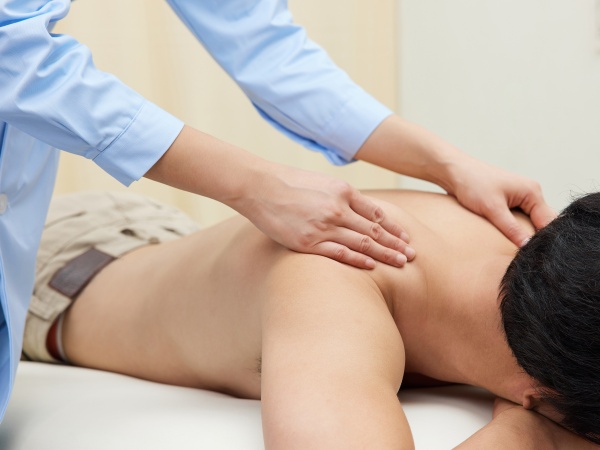
Indications
Indications include: prolonged convalescence, postoperative recovery, sprains, joint dislocations, low back pain, muscle atrophy, migraines, frontal and posterior headache, trigeminal neuralgia, intercostalgia, sciatica, sciatic neuralgia, lumbar neuralgia, joint pain in the extremities (including shoulders, elbows, wrists, knees, ankles, fingers and toes). Facial paralysis, facial muscle spasm, soleus muscle spasm. Muscle pain in shoulders, back, waist, knees, etc., due to rheumatism. In addition, disorders such as nervous vomiting, dyspepsia, habitual constipation, gastric ptosis, chronic gastritis, insomnia, nocturnal pollution and neurovegetative syndrome, among others, can be considered for use or combination with massage techniques.
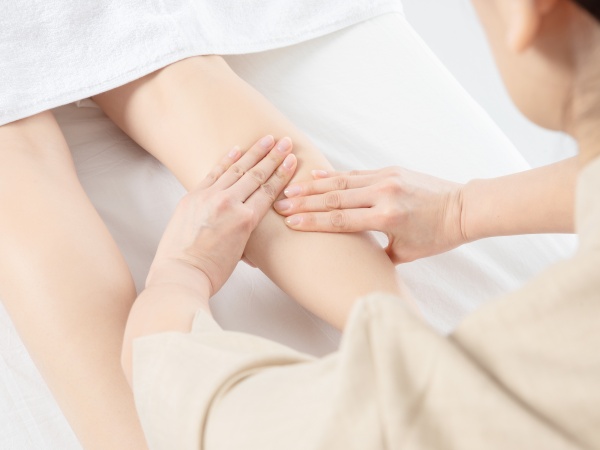
Contraindications
Contraindications include: acute infectious diseases, acute osteomyelitis, tuberculous arthritis, infectious skin diseases, eczema, fire or water burns, skin ulcers, tumors and various ulcers. In addition, massage is not recommended during menstruation, in pregnant women more than five months old, and in patients with acute appendicitis, acute purulent peritonitis and acute appendicitis. Massage is also discouraged in patients with chronic debilitating illnesses, severe cardiovascular diseases, or frail elderly people.
Characteristics
Massage in Chinese medicine is economical and simple, since it does not require specialized medical equipment, and is not limited by time, place or climate conditions, and can be performed at any time and place. It is smooth, reliable, easy to learn and use, and has no side effects. Precisely because of these advantages, massage has become a very popular health and fitness measure among the masses. For healthy people, it can strengthen the body's natural ability to resist diseases and achieve health care effects; For patients, it can relieve local symptoms and accelerate the functional recovery of the affected part, thus obtaining good therapeutic results.
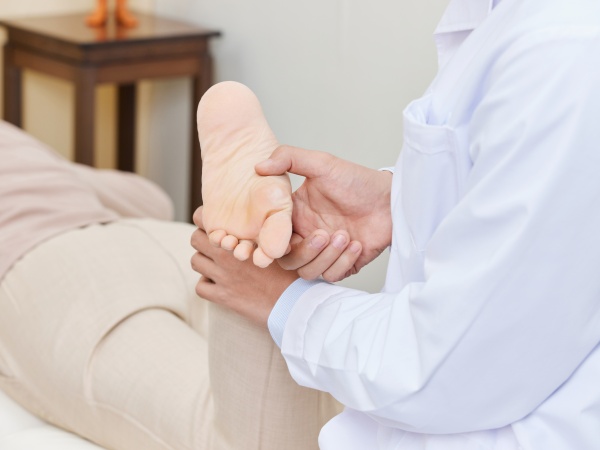
Massage Therapies
One is active massage, also known as self-massage, which is a self-care method in which one massages oneself. The other is passive massage, which is a medical technique performed by a professional in the treatment of patients, that is, the massage therapy referred to in this text. Massage techniques are not consistent, but in summary, commonly used techniques include the following eight: pressure, friction, kneading, gripping, rubbing, pinching, vibration, tapping, among others. It should be noted that these eight techniques are not used in isolation, but are often combined with each other.
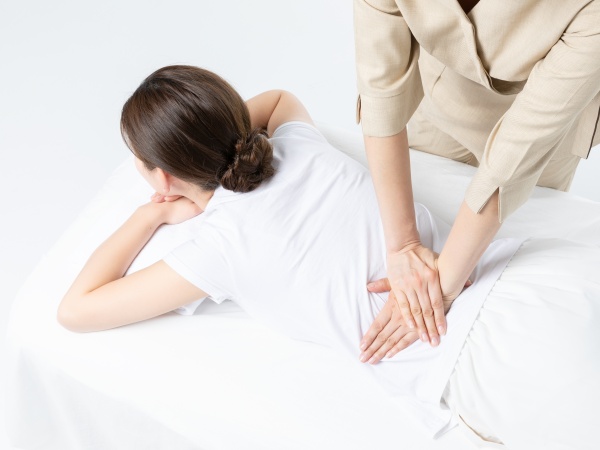
Pressuring
Using the pads of the fingers or the palms of the hands, applying rhythmic pressure to the appropriate areas of the patient's body is called pressure. Single-hand or two-hand pressure techniques are commonly used. In clinical practice, one- or two-hand pressure techniques on the lower ribs or abdomen are commonly used. The pressing technique can also be used with an additional hand on the back or muscular areas. For example, one technique involves placing the left hand underneath and the right hand applying light pressure to the top of the fingers of the left hand; or vice versa.
Friction
Friction means to caress. Gently stroking the appropriate areas of the patient's body with the fingers or palm of the hand is called friction. Friction is often combined with pressure and kneading, and is commonly used on the upper ends and shoulders with one hand, and on the chest with both hands.
Kneading
The doctor performs a gentle rotating movement with his hands in contact with the patient's skin, which is called kneading. Kneading can be done with one hand or both hands. For example, a kneading technique may be used with additional pressure from one hand on the patient's calf, with a left hand applying pressure to the calf and the right hand applying pressure to the top of the left hand.
Gripping
Slightly lifting the skin and muscle in appropriate areas is called gripping. In clinical practice, a one-hand grip technique is commonly used on the legs or muscular areas. For example, if a patient experiences chest tightness due to emotional tension or anger, a one-handed grip technique can be applied over the area where the collarbone and shoulder meet, lifting and releasing the muscle, repeating. This movement twenty times a minute and then resting briefly before repeating it twenty more times, which can help relieve chest tightness and regulate breathing.
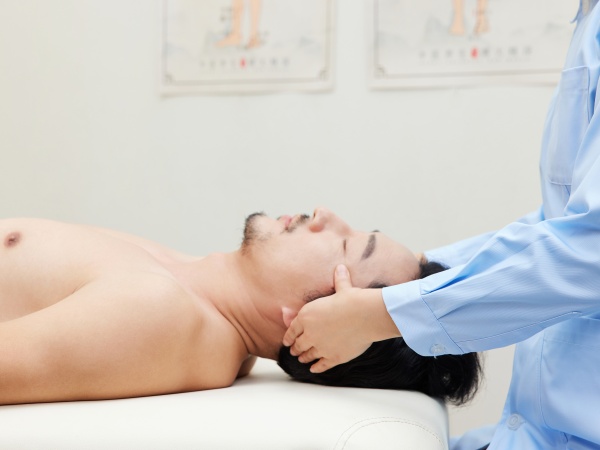
Rubbing
In the appropriate area, the doctor uses a gentle circular motion with his fingers to rub the patient's skin, called rubbing. Rubbing can be done with the fingers for small areas such as the temples, or with the palm of the hand for larger areas such as the back. There is also the rubbing technique with additional pressure from one hand, for example, when rubbing the calf, the left hand is placed on the patient's lower leg while the right hand applies pressure to the back of the left hand .
Pinching
Lifting the skin and muscle from the bone in appropriate areas with your fingers is called pinching. Pinching and gripping have similarities, but gripping requires more strength throughout the entire hand, while pinching focuses on the fingers. Gripping requires more strength, while pinching is gentler. Pinching is a basic technique commonly used in massage, often combined with kneading.
Vibration
It is a massage technique that involves vibration and shaking. Movements should be quick, short and uniform. About ten vibrations per second is recommended, which is equivalent to about six hundred vibrations per minute. Since vibration is associated with movement, it is also called vibration technique. For example, placing the thumb vertically over a patient's painful spot and vibrating the forearm forcefully, causing a tremor in the thumb, is called single-finger vibration technique. You can also use the thumb and index finger, or the index and middle finger, placed on a painful spot on the patient or on the forehead, and vibrate with the force of the forearm, which is called two-finger vibration technique.
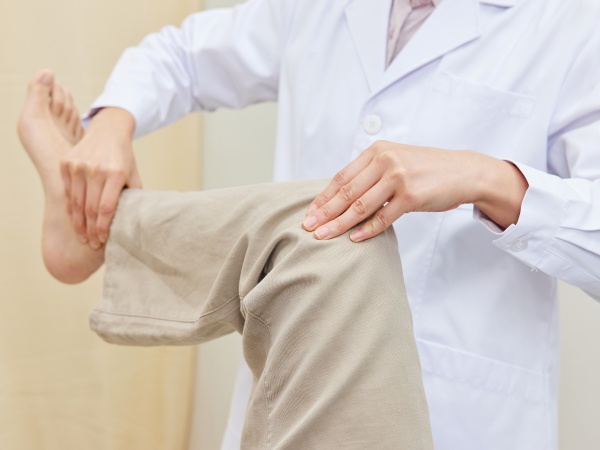
Tapping
The tapping technique, also known as percussion technique. In clinical practice, it is mainly used after massage manipulation, but can also be used independently when necessary. The force of the tapping technique must be precise, soft and flexible. When applied correctly, it can provide the patient with a feeling of relaxation; Otherwise, it may be ineffective. Both hands are mainly used in the tapping technique. Common techniques include:
(1) Tapping technique with the edge of the hands: Both hands are placed sideways, with the thumb up and the little finger down, with the fingers approximately one centimeter apart. When the hands hit, the fingers come together, and when they are raised, the fingers separate slightly. The movements of both hands alternate.
(2) Flat palm tapping technique: Both hands are placed flat on the muscle and tapped alternately in a rhythmic rhythm.
(3) Horizontal Knuckle Tapping Technique: Both hands are made into fists with the backs facing up, thumbs outward, and fingers slightly apart. The fists are hit horizontally alternately. This technique is commonly used on muscular areas such as the waist, legs, and shoulders.
(4) Vertical Knuckle Tapping Technique: Both hands are made into fists with thumbs up and little fingers down, fists are placed vertically in front of each other. The fists are hit alternately with the backs of the hands facing up. This technique is commonly used on the back and waist.
It is important that the tapping technique be performed precisely and gently to give the patient a sense of relief.
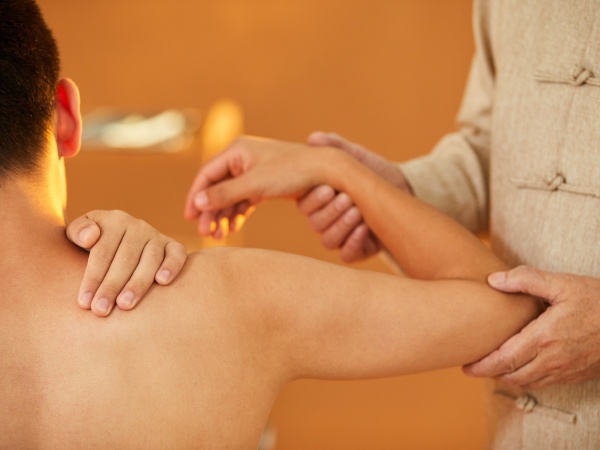
Acupuncture point massage
1.Ying Xiang Point
Location: The Ying Xiang point is located on either side of the wings of the nose, in a vertical line with the eyes when looking directly forward.
Benefits: Massaging this point can quickly remove heat from the lung and has a noticeable effect on adjusting the color of the face, especially when there is a yellowish tone due to physical discomfort.
Massage method: Use your fingertips to press the point, apply light pressure and move it back and forth in a left-right direction to stimulate the point. Perform the massage for about 1 minute each time, it is recommended before sleeping. In addition to the common use of the index finger for pressing, according to traditional Chinese medicine, there is an "internal-external" relationship between the Taiyin thumb of the lung and the Ying Xiang point of the large intestine, so switching to the thumb for massaging can increase the effectiveness.
2.Tai Yang Point
Location: Surely everyone knows where Tai Yang Point is, right?
Benefits: The Tai Yang point is closely related to the facial nerves. According to traditional Chinese medicine, it can help drain and reduce facial swelling, being effective for facial edema caused by poor internal circulation and facial darkening due to excess fatigue.
Massage method: Use the thumbs of both hands to press the point and gently move it in a circular motion. You can also combine Tai Yang point massage with forehead and eye socket massage as needed.
3.Da Ying Point
Location: The Da Ying point is located on the sides of the jaw, in the depression below the lips and jaw.
Benefits: This point can not only promote blood circulation in the face, but also has a firming effect on the skin. Since it is close to the cheeks on both sides of the chin, the popular saying that "women who support their cheeks are small-faced beauties" is not without reason.
Massage method: Use your index finger to press the point, exhale while applying pressure for 6 seconds and repeat 4-5 times.
Summary
These massage techniques are mainly applied to muscular areas such as the neck, shoulders, back, waist, thighs, calves, etc. The force of tapping should start light and then gradually increase. The tapping speed usually starts out slow and then gradually speeds up. It is important to remember that the first blow should not be strong, but soft but firm, combining softness with firmness. When hitting, the hands should be firm but elastic so that the patient feels comfortable. Tapping time is usually 1 to 2 minutes, or 3 minutes maximum. In exceptional cases, it may be necessary to adjust the time depending on the patient's condition. These techniques can be performed independently or combined with other massage techniques.
Massage Functions
1.Unblocking the Meridians
The "Huangdi Neijing" says: "When the meridians are blocked and illness occurs, treat it with massage", indicating that massage has the function of unblocking the meridians. For example, massaging the Zusanli point on the foot and stimulating the spleen meridian can increase the secretion of digestive juices. From the perspective of modern medicine, massage mainly stimulates peripheral nerves, promotes blood and lymph circulation, and tissue metabolism to coordinate functions between tissues and organs, thereby improving the metabolism and overall function of the body.
2.Harmonization of Qi and Blood
In the book "Wanshou Xianshu" of the Ming Dynasty, health expert Luo Hong said: "Massage can unblock pores and regulate the circulation of Qi and blood." Here, "regulate the circulation of Qi and blood" means harmonizing Qi and blood. The massage uses gentle, gentle movements along the meridians and acupuncture points to regulate the entire body and harmonize Qi and blood, thus strengthening the health of the body. From the point of view of modern medicine, the mechanical stimulation of massage techniques, by converting mechanical energy into thermal energy, raises the temperature of local tissues, which promotes capillary dilation, improves blood circulation and lymphatic, reduces blood viscosity, decreases peripheral vascular resistance and relieves the load on the heart, so it can prevent and treat cardiovascular diseases.
3.Improvement of the Body's Immunological Capacity
For example, in cases of childhood dysentery, the symptoms decrease or disappear after massage; When children have dry or wet sounds in the lungs, the transverse lines can be massaged on the palm of the hand. Massage has been shown clinically and in animal experiments to have anti-inflammatory, antipyretic, and immune-strengthening effects, which can improve the body's ability to resist disease. It is precisely because massage can unblock the meridians, promote the circulation of Qi and blood, and maintain the Yin-Yang balance of the body, that after massage you can feel muscle relaxation, flexible joints, improved mood and relief from fatigue, which plays an important role in maintaining health.
Advantages of Massage
Massage has many advantages, it is easy to learn, perform, and it is economical and practical. It can also replace medications. For example, some patients may feel stimulated after massage, acting as a stimulant, while others may calm down, acting as a sedative.
Because massage benefits the circulatory system and metabolism, it is quite safe and reliable for patients with general chronic diseases or excessive weakness. For children who have difficulties taking medication, massage can strengthen children's health and have a preventive effect. For some complicated diseases, it can also be combined with acupuncture treatments and medications. However, for acute or infectious diseases with high fever, or organic diseases such as typhus, pneumonia, pulmonary tuberculosis, massage can only be complementary. If there are tumors, acute suppurative appendicitis, intestinal perforation, cholecystitis caused by intestinal worms, which are serious and urgent diseases, it is necessary to quickly take the patient to the emergency hospital without applying massage to avoid delays in treatment.
Precautions
- Before the massage, it is necessary to trim your nails, wash your hands with hot water and remove objects that hinder the operation, such as rings.
- You must have a kind, serious and careful attitude, patiently explain the patient's condition to obtain their cooperation.
- The position of the patient and the doctor must be appropriate; Especially the patient's posture, whether sitting or lying, should be comfortable and convenient for the operation.
- The massage technique must be appropriate and the patient's expression must be constantly observed to make him feel comfortable.
- The duration of the massage should be 20 to 30 minutes per session, and the number of massage sessions is considered as a course of treatment.
- Massages should not be performed when the patient is very angry, happy, scared or sad.
- After eating, you should not do massage immediately, it is generally recommended to do it about two hours after eating.
- During the massage, some patients may fall asleep, so it is necessary to cover them with a towel to prevent cooling and pay attention to the temperature of the room. You should not massage in places with drafts.
Physical and mental relaxation
During the massage, in addition to concentrating on thinking, it is especially important to remain calm and relax the entire body.
Accuracy in point location
The method of locating common acupuncture points and operating techniques must be mastered to ensure accurate location and correct technique.
Proper application of force
Because insufficient force will not have the necessary stimulating effect, and excessive force may cause fatigue and skin damage.
Gradual progression
The frequency and intensity of the massage should be increased gradually, and the massage points can also be increased gradually.
Persistence
Whether it is to maintain health or treat chronic diseases, massage is not effective in one or two days, it generally requires time to show results, so you must have confidence, patience and perseverance.
In addition to the above precautions, the time for maintenance massage should also be taken into account, it is recommended to do it for 20 minutes each time. It is best to do it once in the morning and once in the evening, such as right after you get up in the morning and before going to bed at night. To improve the effectiveness of the treatment and prevent skin injuries, certain lubricants can be used during the massage, such as talcum powder, massage oil, among others. If there are skin lesions, ulcers, fractures, tuberculosis, tumors, bleeding, etc., it is prohibited to massage those areas for health maintenance. During self-massage, it is best to wear only a tank top and shorts, and directly touch the skin with your hands. If you sweat after the massage, you should avoid the wind to avoid catching a cold. Furthermore, you should not do health maintenance massages when you are hungry, too full, have drunk alcohol or are very tired.













